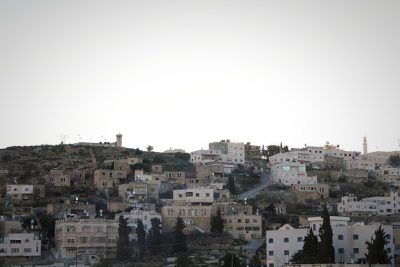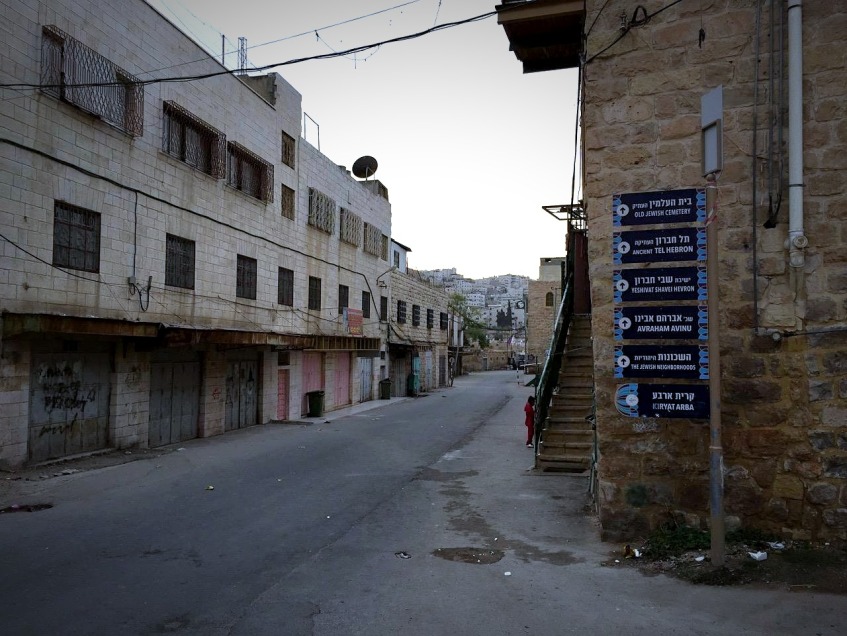Hebron: “The Occupation Crosses Moral Red Lines”. Israeli Settlers, Freedom of Movement, Military Checkpoints

Featured image: The hills above Hebron. (Photo EAPPI/Alex)
Hebron is the largest city in the West Bank and perhaps one of the most unique. About 800 Israeli settlers live in its centre, under the protection of a similar number of soldiers. This has resulted in the Israeli army closing off large sections of the city centre to Palestinians. Harsh restrictions have also been imposed on residents of adjacent areas.
Settlements are illegal under international law. The Fourth Geneva Convention, applicable during military occupation, states that the occupying power “shall not deport or transfer parts of its own civilian population into the territories it occupies”.
Freedom of Movement in Hebron
At the centre of the city is the burial site of Abraham and Sarah, Isaac, Rebecca and Jacob. Judaism ranks Hebron as the second-holiest city after Jerusalem, while Islam regards it as one of the four holy cities.

Sunset in Hebron City. Photo EAPPI/Alex
Article 12 of the International Covenant on Civil and Political Rights states;
“Everyone lawfully within the territory of a State shall, within that territory, have the right to liberty of movement”.
Shuhada Street
Once the city’s main thoroughfare, Shuhada street in Hebron’s old city was designated a Closed Military Zone (CMZ) in 2015, though it had already been closed to Palestinian traffic for many years before that.

Shuhadda Street, Hebron. Photo EAPPI/Miles
Hebron’s old city has been under Israeli military control since 1997, when an agreement, intended to be temporary, divided control of the city between the Palestinian Authority and Israel.

Israeli military post atop a Palestinian home in Hebron’s old city. Photo EAPPI/Alex
Palestinian residents of Shuhada Street are not permitted to drive there, no matter how old or infirm, even to bring heavy items to their homes. But Israeli settlers are free to drive along it, or take buses that only Israelis may use.

Shuhadda Street, Hebron. Photo EAPPI/Miles
Military Checkpoints in Hebron
Within the small central area of Hebron there are some 20 checkpoints. These significantly disrupt the day-to-day lives of Palestinians.

Military Checkpoint in Hebron. Photo EAPPI/Miles
This pressure on their social, economic and cultural life is such that more and more feel compelled to leave.
Breaking the Silence in Hebron
In 2004 a group of Israeli soldiers who served in Hebron created an exhibition out of testimonies and photos of their time there. They wanted to show Israelis the reality of what they had seen.

Breaking the Silence tour, Shuhadda Street, Hebron. Photo EAPPI
The soldiers created an organisation called Breaking the Silence. The name reflects their desire to speak the truth about what young Israelis experienced while serving their country. They have built up a large library of testimonies from serving and former soldiers.
When asked why they do this their spokeswoman says; “The occupation crosses moral red lines”.
Some of the testimonies make for harrowing reading.
The Israeli government is attempting to suppress Breaking the Silence. It challenges the confidentiality of the testimonies, seeking to undermine their credibility. The government also takes legal steps against them, such as blocking funding and preventing them speaking in schools and other institutions. The pressure on Breaking the Silence has been increasing, and individuals have been attacked and threatened personally.

